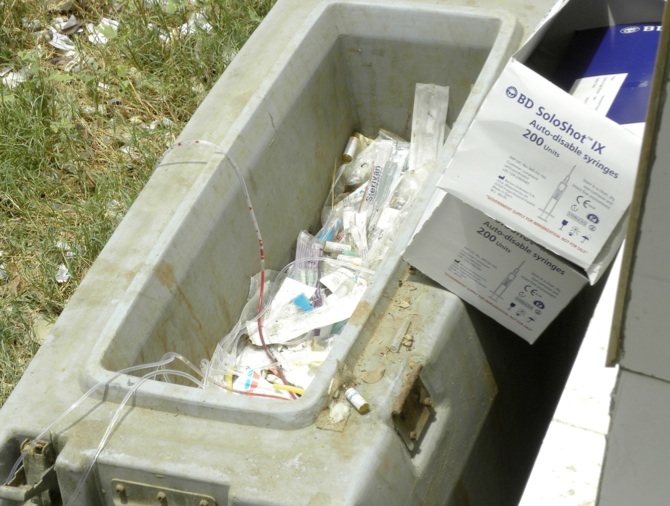By Emily Schneider
Special Contributor, Blog Entry #3
We’re visiting our third health center in Bihar, India and I am hot, dirty, and exhausted. We arrived in Patna at 5:00 a.m., after a twelve hour train ride from Delhi, and have been visiting health centers ever since. Right now, we’re at a Primary Health Center (PHC) in Patna. Primary Health Centers are larger than the Sub-Health Centers (SHC) but are spread farther apart throughout the districts. They should be open 24 hours and have doctors and nurses on hand at all times. Our guide informed us that this particular PHC served as the model for all others in the state of Bihar.

We are trying to see as many health centers, covering all economic levels, in as many different districts throughout the state as possible. Our job is to question the doctors and nurses about the care they’re providing and the supplies they have available. We are also supposed to thoroughly document everything we see with pictures. We’re trying to find out if the health centers in Bihar are complying with the established national guidelines. Previously, they were in violation of almost every regulation. For example, Bihar didn’t have enough health centers and the health centers they had established didn’t have enough medical equipment or supplies. Additionally, they weren’t open the requisite 24hours a day, and they were not clean and sanitary.
All of these problems leads to India’s alarmingly high maternal mortality rate. Human Rights Law Network even filed a public interest lawsuit to bring the substandard level of care to the attention of the Indian government and the public. The courts ordered a reform of the Bihar health centers a year ago. Now my team has been sent to see if there was any change following the court order or if the conditions remain the same.

One of the most prevalent problems that directly contributes to maternal mortality rates is anemia. Many studies note there is a prevalence of anemia throughout India and that it contributes to death during childbirth. It also helps to explain the very high maternal death rate in comparison to other countries. The percentage of maternal deaths caused by hemorrhage is also greater in India than the rest of the world. This can also be attributed to the high rate of anemia.
Anemic women are increasingly susceptible to communicable diseases, such as tuberculosis and malaria; both of which are associated with complications during and after pregnancy. According to the most recent National Family Health Survey (NFHS-3), in India, it is estimated that 55% of women are anemic; some studies place the number of pregnant women who are anemic as high as 85%. The NFHS-3 survey also stated that in 2004, approximately 22,000 maternal deaths were directly related to anemia. However, the most troubling aspect of the survey is that the number of women suffering from anemia in India has steadily increased over the past ten years.
According to the new government guidelines, women should be provided with dietary supplements during the requisite four ante-natal care appointments. The implementation of this simple practice would be a big step forward in helping to reduce the occurrence of anemia in pregnant women. That is, if it actually ever happened. The problem is that ensuring that this practice does manage to be implemented is dependent on a number of things. First, all pregnant women should be officially registered in their district; second, they should be provided free ante-natal appointments that involve physical checkups, tests for anemia, vaccinations, and dietary supplements; and third, the facility must actually have the proper dietary supplements to provide them to the women.
The reality is that many women never register. Those who do register usually don’t receive any ante-natal care visits. Those few who do go for ante-natal care visits do not get proper physical exams and are hardly ever tested for anemia. Almost none of the women are actually given the dietary supplements to help them stay healthy and strong during pregnancy.

We asked the chief medical officer at the “model” health center to estimate how many mothers he sees with anemia. He told us he hardly ever treats pregnant anemic women and that anemia is a very rare condition in India. Hopefully, in our next few visits we will be able to uncover more information to determine who is correct. The doctor or the statistics from the NFHS-3 survey.
Emily Schneider is a third-year law student at Syracuse University College of Law. She will be contributing to Impunity Watch by blogging about her experiences in India, where she is spending her summer working as an intern.


